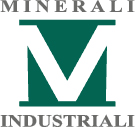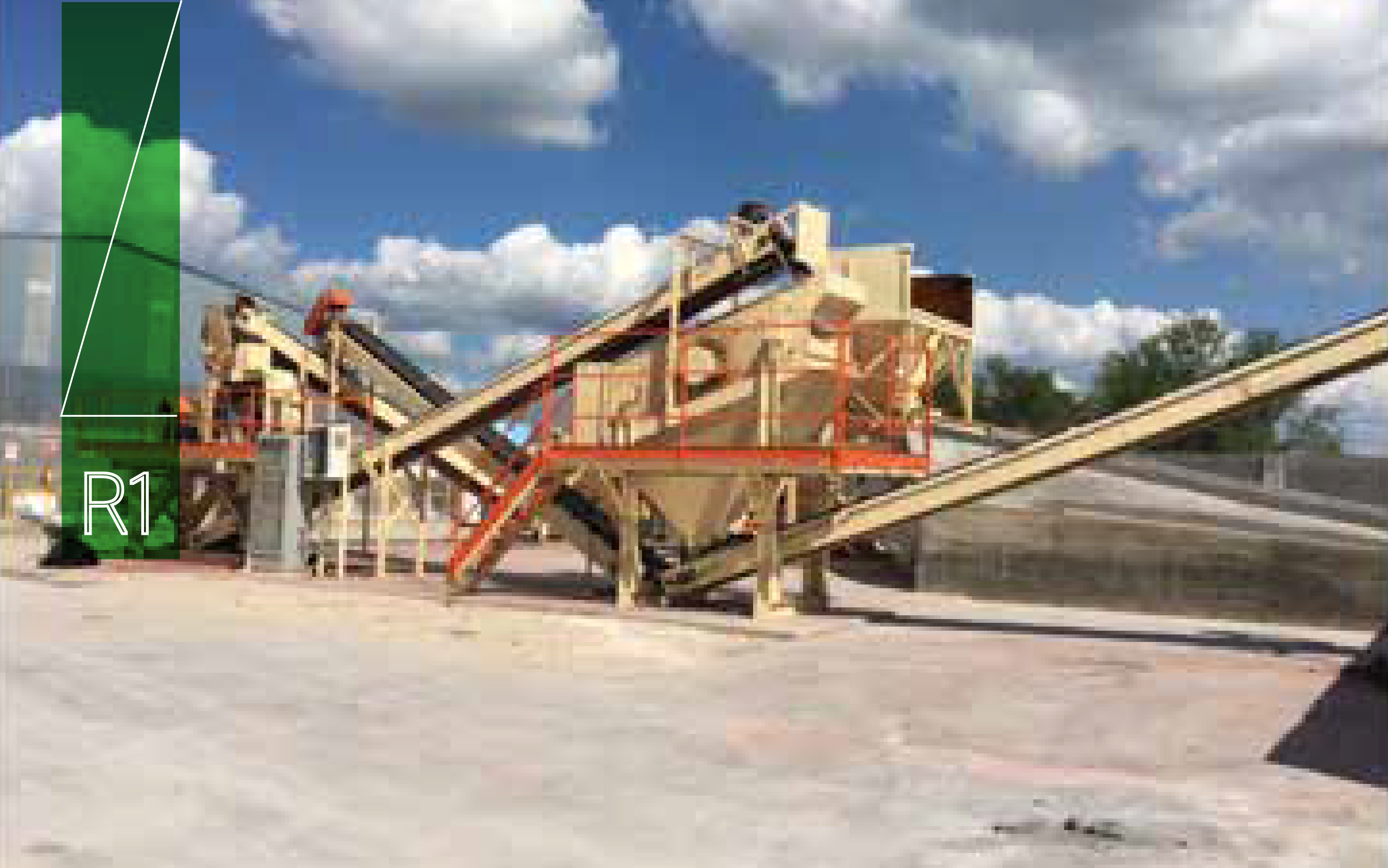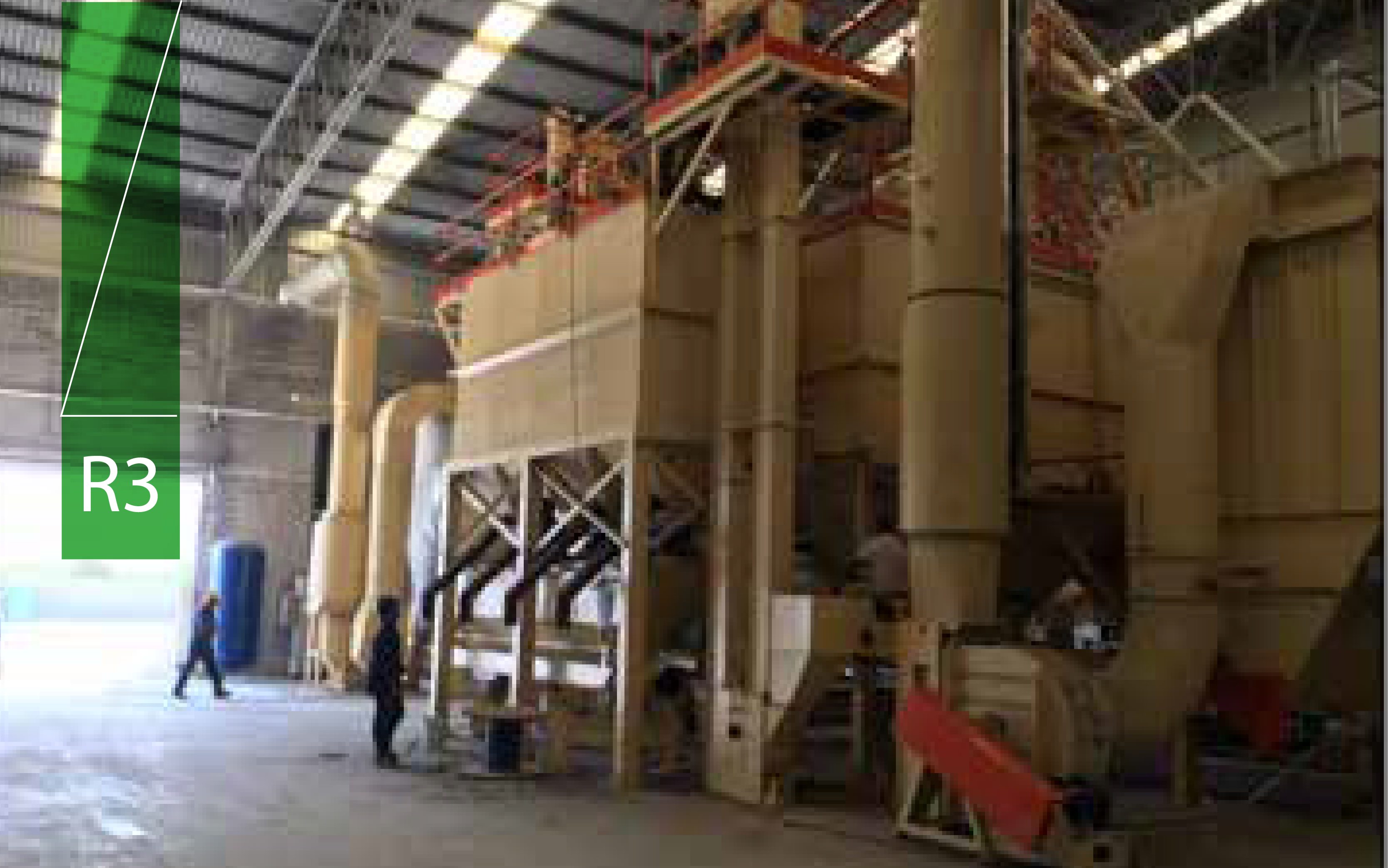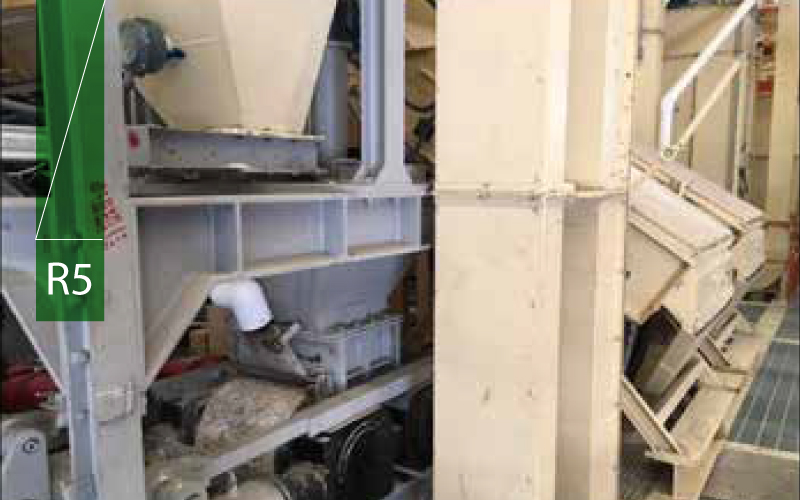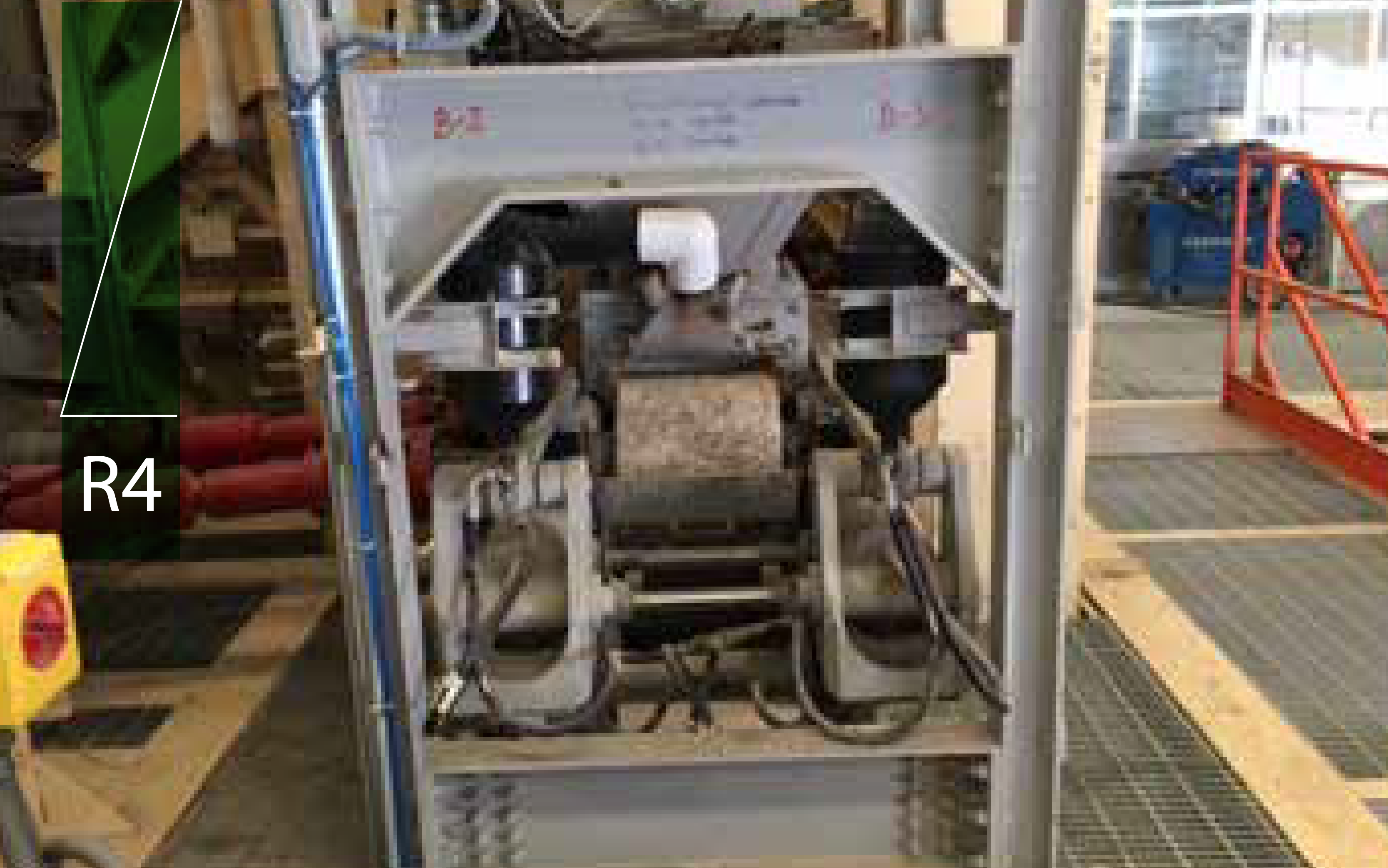Processes
Main process areas of our plant.
R1
This area allows to reduce the size of minerals and industrial by-products from 600 mm to 5 mm. It is located outside to be able to easily carry out production changes and to safely handle rocks and large pieces that are fed with a front loader to the plant.
R3
The mixing area allows us to perform controlled batch mixtures of up to 4 different previously dried minerals, guaranteeing an error range of 1 kg in each weighing. This area is aimed at all producers who buy different powdered minerals and are interested in receiving a single product (mono component).
R5
In the granulate grinding area, with a high compression RHP mill that operates in a closed circuit with vibrating screens, we obtain products with a granulometry from 0-200 microns to 0-1000 microns.
R7
It is the storage area of the finished product where we currently have the possibility of producing super bags of the customer’s indicated weight, or of delivering the material in bulk. In this year 2017 we will put into operation an area to produce 25 kg bundles of paper.
R2
The drying area removes moisture from the raw material, the product that is fed is already crushed to 0-10 mm and after drying it is stored internally in one of the 6 silos that feed the R3, R4, R5 and R6 distributions .
R4
The magnetic separation area is intended for all minerals that need low oxide contents such as Fe2O3 and TiO2.
To obtain the best “performance”, the granulometry in feed should be from 0.100 mm to 1.800 mm, if it is necessary to release the paramagnetic oxides that are inside the grains, it is preferable to feed 0.100-1.000 mm, grinding them beforehand to have the best grade release.
R6
In the fine grinding area, with a high compression RHP mill that operates in a closed circuit with an air classifier, we obtain products with a granulometry from 0-30 microns to 0-200 microns.
R1
This area allows to reduce the size of minerals and industrial by-products from 600 mm to 5 mm. It is located outside to be able to easily carry out production changes and to safely handle rocks and large pieces that are fed with a front loader to the plant.
R2
The drying area removes moisture from the raw material, the product that is fed is already crushed to 0-10 mm and after drying it is stored internally in one of the 6 silos that feed the R3, R4, R5 and R6 distributions .
R3
The mixing area allows us to perform controlled batch mixtures of up to 4 different previously dried minerals, guaranteeing an error range of 1 kg in each weighing. This area is aimed at all producers who buy different powdered minerals and are interested in receiving a single product (mono component).
R4
The magnetic separation area is intended for all minerals that need low oxide contents such as Fe2O3 and TiO2.
To obtain the best “performance”, the granulometry in feed should be from 0.100 mm to 1.800 mm, if it is necessary to release the paramagnetic oxides that are inside the grains, it is preferable to feed 0.100-1.000 mm, grinding them beforehand to have the best grade release.
R5
In the granulate grinding area, with a high compression RHP mill that operates in a closed circuit with vibrating screens, we obtain products with a granulometry from 0-200 microns to 0-1000 microns.
R6
In the fine grinding area, with a high compression RHP mill that operates in a closed circuit with an air classifier, we obtain products with a granulometry from 0-30 microns to 0-200 microns.
R7
It is the storage area of the finished product where we currently have the possibility of producing super bags of the customer’s indicated weight, or of delivering the material in bulk. In this year 2017 we will put into operation an area to produce 25 kg bundles of paper.
LABORATORY
We have a PRODUCTION LABORATORY where shift supervisors perform the granulometric to dry controls every hour with an ALPINE (powdered products) and ROTAP (granulated products) equipment.
We have a QUALITY LABORATORY independent of the operations, being able to carry out physical and chemical analyzes from the reception of the raw material, production, finished product and shipment, being able to issue quality certificates.

